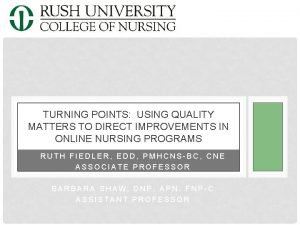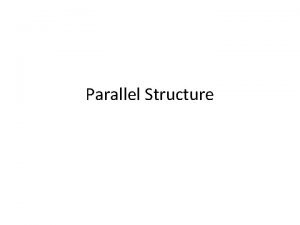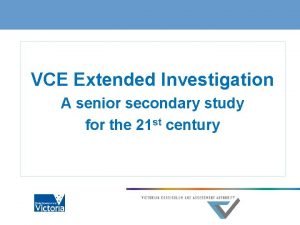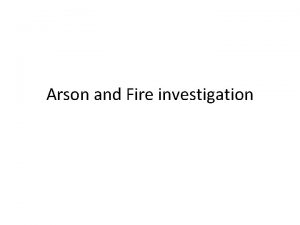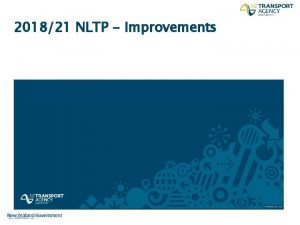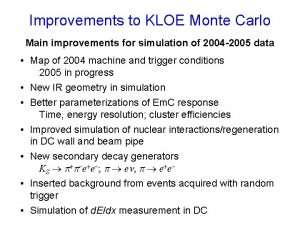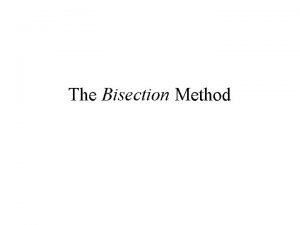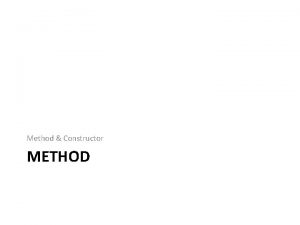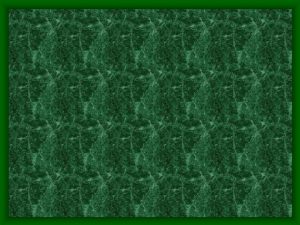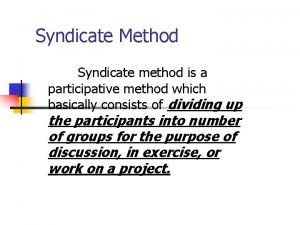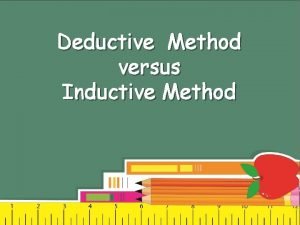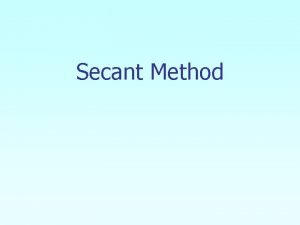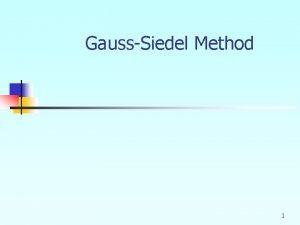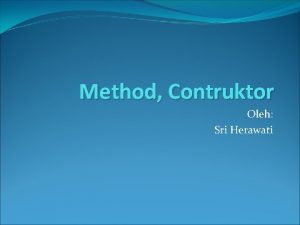Some improvements of new method of investigation on
































- Slides: 32

Some improvements of new method of investigation on the alignment of galaxies in clusters W. Godłowski, V. Stephanovich, P. Pajowska, J. Popiela Instytut Fizyki Uniwersytet Opolski Hot topics in Modern Cosmology 1 - 6 May 2017 Cargèse

Coauthors of some of the papers dr hab. Frank Baier Instytut Astrofizyki (Poczdam) dr Katarzyna Bajan UP (Kraków) dr Monika Biernacka Instytut Fizyki UJK (Kielce) dr hab. Piotr Flin, prof. UJK, Instytut Fizyki UJK (Kielce) dr hab. Włodzimierz Godłowski Instytut Fizyki UO (Opole) dr Harvey T. Mac. Gillivray Institute for Astronomy (Edinburgh) dr Elena Panko Nikolaev State University (Ukraina) mgr Paulina Pajowska (Opole) mgr Joanna Popiela Instytut Fizyki UO (Opole) Prof. dr hab. Włodzimierz Stefanowicz IF UO (Opole)

Theory of galaxy formation ü In the commonly accepted LCDM model the Universe is deemed to be spatially flat, homogeneous and isotropic at appropriate scale ü The dimension of this scale is changing with the growth of our knowledge of the Universe ü In this model, the structure was formed from the primordial adiabatic, nearly scale invariant, Gaussian random fluctuations

Cosmic web: structures and voids

Various models can account for various aspects of the galaxy formation process on different scales, as well as for various observational features of structures. This provides us with method for testing scenarios of galaxy formation. Various models of galaxy formation predicts different type of galaxy alignment. In other words, the observed variations in angular momentum give us simple but fundamental test for different models of galaxy formation (Romanowsky & Fall 2012; Joachimi et al. 2015; Kiessling et al. 2015).

Galaxy formation scenarios • • Primordial turbulences accounts for the spin angular momentum as a remnant of the primordial whirl (von Weizsacker 1951, Gamow 1952, Oziernoy 1978, Efstathiou and Silk 1983) Hierarchical clustering: large-scale structures in the Universe form "from bottom to up", as a consequence of gravitational interactions between galaxies (Peeble 1969, Doroshkevich 1970, Dekel 1985) Zeldovich's pancakes model: structures in the Universe form "from up to bottom " in the effect of asymmetrical collapse of a large structure (Sunayev and Zeldovich 1972, Doroshkevich 1973, Shandarin 1974, Doroshkevich, Saar, and Shandarin 1978, Zeldovich 1978), Li Li-Xin (1998) model involves galaxy forming in a rotating universe as a consequence of the conservation of angular momentum in a rotating universe, based on ideas of Gamow (1946), Goedel (1949) and Colins and Hawking (1973)

Methods of testing of galaxies formation scenarios Possible orientations of galaxies Different theories of galaxy formation make predictions regarding to the angular momentum of galaxies (Peebles 1969, Doroshkevich 1973, Shandarin 1974, Silk & Efstathiou 1983, Catelan & Theuns 1996, Li 1998, Lee & Pen 2000, 2001, 2002, Navarro et al. 2004, Trujillio et al. 2006) Class of models: primordial turbulences, hierarchical clustering, Zeldovich's pancakes. Model of hierarchical clustering was improved - tidal torque scenario, recently effect of „micro pancake” was also taken into account The analysis of an orientation of galaxies planes is regarded as a standard test of galaxies formation scenarios

Conclusions I • Orientation of galaxies in the Local Supercluster is in agreement with Zeldovich's pancakes model and with new variant of tidal torque scenario in hierarchical clustering model • Model of primordial turbulences predicts the wrong direction of the orientation of galaxy planes

Orientation of galaxies (galaxy clusters) in the space Assuming that galaxy (or galaxy structure) is three axis ellipsoids we determine the position and inclination angles. Now we can compute the angles which give the spatial orientation of the normal line to the galaxy (main plane of the structure) in the investigated coordinate system. Those are the angle : d. D giving the information about inclination of the normal line to the main plane of the coordinate system and angle h giving information about location of projection of the normal line to the main plane with respect on the X axis These angles give full information about spatial orientation of galaxy (structures)

Hawley – Peebles method • In the 1975 Hawley and Peebles gave the proposal to use three statistical tests for investigations of the galaxies orientation in the large structures. Since then, this method has been the standard method of searching for galactic alignments. • We investigated the distributions of the angles giving information about galaxy angular momentum. The position angles of the galaxy major axes, as well as two angles (d. D and h) describing the spatial orientation of galaxy plane can be tested for isotropy, by applying three different statistical tests. Determined angles d. D and h from inclination and position angles (with know position of galaxy on the sphere (Flin & Godłowski 1986 MNRAS 222, 525, Godłowski 1993 MNRAS 265, 874, Godłowski 1994 MNRAS 271, 19, Godłowski et al. . 2010, APJ 723, 985, Godłowski 2012 APJ 747, 7

Angular momentum and galaxy clusters • Godłowski Szydłowski & Flin 2005 suggested that in pairs and small groups we have a non vanishing angular momentum: in groups and poor clusters we have no alignment of galaxies, in rich cluster (CD) we have an alignment of galaxies (Godłowski et al. 1998 A&A 339, 709, Baier et al. 2003 A&A 403, 847) as well as in superclusters • It is assumed that normal lines to the galaxy’s planes are their axes of rotation, which seems to be quite reasonable, at least for the spiral galaxies • There is no clear empirical evidence that galaxy groups and clusters rotate (Hwang & Lee 2007). Thus, it can be accepted that the total angular momentum of galaxy structure is mainly connected with the galaxies' spins. Moreover, stronger alignment suggests greater total angular momentum of galactic groups or clusters • Alignment of galaxies in cluster should increase with the number of objects in a particular cluster • Usually the dependence between angular momentum and mass of the structure is presented as empirical relation J~M 5/3. • Many attempts to explain these relations – it is rather difficult to explain the observed relation between the richness of galaxy cluster in the light of galaxy formation scenarios – possibilities: a) the alignment is due to tidal torque, as suggested by Catelan and Theuns (1996 ) Stefanowicz and Godłowski APJ submitted b) Li Xin-Li model It was investigated in details in Godłowski et all (2010 APJ 723, 985) and Godłowski (2011, IJMPD 20, 1643)

New theoretical results (Stefanowicz & Godłowski APJ 2015) • • We apply the statistical method of Chandrasekhar (1943), used there to calculate famous Holtzmark distribution. We show that in our approach the distribution function is never Gaussian, its form being dictated by the potential of interaction between objects. This calculation permits us to perform a theoretical analysis of the relation between angular momentum and mass (richness) of the galaxy clusters. To do so, we follow the idea of Catelan &Theuns (1996) and Heavens & Peacock (1988). The main difference is that here we reduce the problem to discrete manybody case, where all physical properties of the system are determined by the interaction potential V (rij). The essence of reduction is that we use the multipole (up to quadrupole here) expansion of Newtonian potential so that all hydrodynamic, "extended" characteristics of an object like its density mass are "integrated out" giving its "point-like" characteristics like mass and quadrupole moment. We show that with reasonable assumption about cluster morphology the angular momentum of galaxy structures increase with their richness. The final form of the dependence depend on the assumption about cluster morphology.

Conclusions II • Relation J~M 5/3 is predicted by tidal torque scenario in hierarchical clustering model and model Li Xin-Li. • The paper Stefanowicz & Godłowski APJ 2015: that correct relations J~Mn depend on the true model of the formation of the clusters. • Li Xin-Li model predicts wrong amount of required rotation for spiral galaxies • Dark Mater – natural only in hierarchical clustering model • Large scale structures are usually interpreted as results of tidal interactions

What is happening with alignment of galaxies in clusters? Catalogue of Galaxy Clusters Panko-Flin (PF) (2006) - on the base of MRSS Catalogue (Munster)

Advantages and Disadvantages of PF Catalogue • First so rich catalogue of galaxy clusters complete till 18. 3 m, 6188 clusters • Obtained on the base of MRSS catalogue, every object in the catalogue is a galaxy • No radial velocities - no possibility of removing background objects • Distances extrapolated from 10 th brightest galaxy in clusters – no errors from peculiar motions of galaxies

Alignment of galaxies in PF Clusters Sample of 247 optically selected rich Abell clusters, having in the considered area at least 100 members (Godłowski et al. 2010 APJ 723, 985) The values of analyzed statistics increase with the amount of galaxies' members, which is equivalent to the existence of the relation between anisotropy and number of galaxies in cluster. Effect is stronger if we analyzed only bright galaxies (till m 3+3) – connected with clusters not for example with large scale alignment Effect weakly depends on the velocity dispersion We found no correlation between the alignment and BM type – not confirmed Aryal and Saurer (2007) suggestion

New method of the investigation of galaxy alignment in clusters (Godłowski 2012 APJ 747, 7) • The question which arises is if we could say that in analyzed sample of 247 Abell clusters we found an alignment. • For this manner, we analyze the distributions of position angles of galaxies belonging to investigated clusters using c 2 test, Fourier tests and autocorrelation test as well as Kolmogorow test. • For our sample of 247 Abell clusters, we compute the mean values of analyzed statistics. Our null hypothesis H 0 is that mean value of the analyzed statistics is as expected in the cases of a random distribution of analyzed angles. We compared our results with theoretical predictions as well as with results obtained from numerical simulations. • The tests, originally proposed by Hawley and Peebles (1975), were analyzed in details and some improvements were proposed. .

Statistical tests Godłowski 2012 APJ 747, 7

In reality

Statistical tests II Fourier Test Godłowski 2012 APJ 747, 7 Theorem of propagation errors linear approximation

In reality

Statistical tests - results We found that orientations of galaxies in analyzed clusters are not random i. e. we found an existence of alignment of galaxies in our sample 247 rich Abell galaxy clusters.

Above results were obtained with help of the analysis of position angles – what with angles d. D and h?

→ The distributions are different!!!

Results of simulations…

Results of simulations…

Cumulative Distribution Function for angle d. D → for real clusters → for clusters each with 2360 galaxies → relal positions of the clusters → distributed on the whole sphere

Conclusions III • In group of galaxies an alignment is not observed • In rich Abell clusters an alignment is observed • Alignment of galaxies in cluster increases with the number of objects in a particular cluster • Dependence between angular momentum and cluster richness is in agreement with tidal torque scenario in hierarchical clustering model and LI Li-Xin model

Conclusions from discussed papers • Position angles of galaxy group are non random oriented. It is strongly correlated with the distribution of neighboring groups in the scale up to about 20 Mpc • The group major axis is in alignment with both the line joining the two brightest galaxies and the direction toward the center of the LSC, i. e. , Virgo cluster • The statistical methods used for the investigation of the galaxy alignment were improved. A new method of the investigation of galaxy alignment in clusters was proposed • Alignment of galaxies in cluster increases with the cluster richness • Galaxy alignment in clusters depends on the location inside or outside of the supercluster and on supercluster’s richness • In group of galaxies an alignment is not observed • In rich Abell clusters an alignment is observed • Stefanowicz & Godłowski arxiv 1611. 09905 preliminary results – present data not allowed to discriminate between different dependence between angular momentum and mass. However, such unambiguous discrimination would • be possible if larger statistical sample of galaxy clusters is available. Moreover, we show that angular momentum of galaxies should increase with time.

GENERAL CONCLUSIONS • • In the commonly accepted LCDM model the structures were formed from the primordial adiabatic, nearly scale invariant, Gaussian random fluctuations No present scenarios of galaxy formations explains all observational results Recently improved hierarchical clustering model - tidal torque scenario, with including effect of „micro pancake” correctly predicts both alignment of galaxies in structures and dependence of alignment on mass of the structures. An alignment of galaxies in the Local Supercluster is also in agreement with this scenario The observed dependence of galaxy alignment on both cluster location and supercluster’s richness clearly supports the influence of environmental effects to the origin of galaxy and their structure formation

Thank You for Your attention

Future investigation - when missing the information about morphological types • In clusters we are able to estimate the fraction of galaxies having the particular morphological type • We simulate isotropic distribution of the inclination angle and position angle for each galaxy • From the formulae cos 2 i=(q 2 -q 02 )/(1 -q 02) we compute „observed” q=a/b (with distribution of morphological types of galaxies in clusters taken into account) • We compute a new value of cos 2 i assuming q 0=0. 2 and now compute values of d. D and h angles • Now we obtained a new „theoretical isotropic distributions” for d. D and h angles which can be compared with „observational” one (obtained with assumption that q 0=0. 2)
 Tenant improvement and betterments
Tenant improvement and betterments Was invented by stephanie kwolek in 1966
Was invented by stephanie kwolek in 1966 Www.svcfin.com make a payment
Www.svcfin.com make a payment Offsite improvements
Offsite improvements Improvements roadmap
Improvements roadmap Direct improvements
Direct improvements Medicare improvements for patients and providers act
Medicare improvements for patients and providers act Independent investigation
Independent investigation Sometimes you win some
Sometimes you win some Sometimes you win some
Sometimes you win some An ice cream countable or uncountable
An ice cream countable or uncountable Contact and non contact forces
Contact and non contact forces Fire and ice diamante poem
Fire and ice diamante poem Some say the world will end in fire some say in ice
Some say the world will end in fire some say in ice Some trust in chariots and some in horses song
Some trust in chariots and some in horses song Symposium is a type of
Symposium is a type of Make the following sentences parallel
Make the following sentences parallel Some new words
Some new words Some new words
Some new words New speaker new line worksheet
New speaker new line worksheet New york pennsylvania new jersey delaware
New york pennsylvania new jersey delaware Fresh oil, new wine scripture
Fresh oil, new wine scripture Movie theater new hartford ny
Movie theater new hartford ny Strengths of the articles of confederation
Strengths of the articles of confederation New-old approach to creating new ventures
New-old approach to creating new ventures The actual and potential rival offerings and substitutes
The actual and potential rival offerings and substitutes Njbta
Njbta New classical and new keynesian macroeconomics
New classical and new keynesian macroeconomics Chapter 16 toward a new heaven and a new earth
Chapter 16 toward a new heaven and a new earth Leanne keene french ambassador arrives from paris
Leanne keene french ambassador arrives from paris New classical and new keynesian macroeconomics
New classical and new keynesian macroeconomics Comparing progressive presidents roosevelt taft and wilson
Comparing progressive presidents roosevelt taft and wilson Vcaa extended investigation
Vcaa extended investigation





